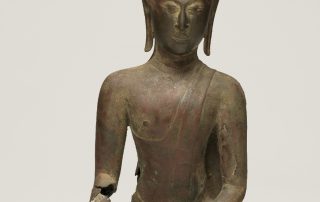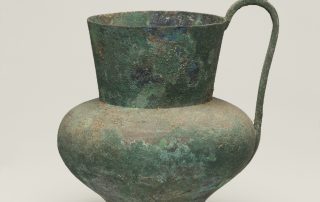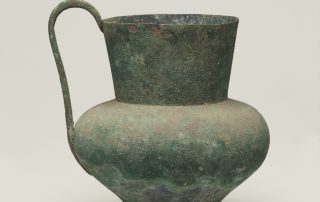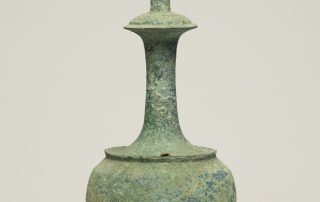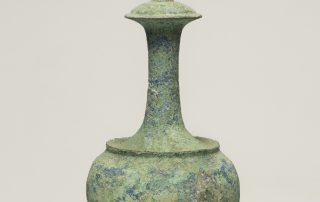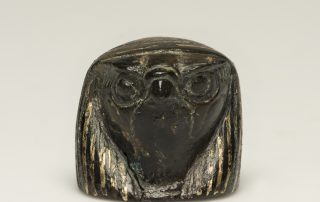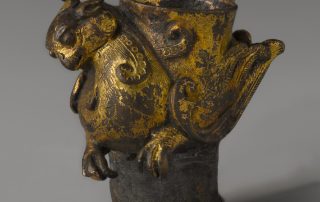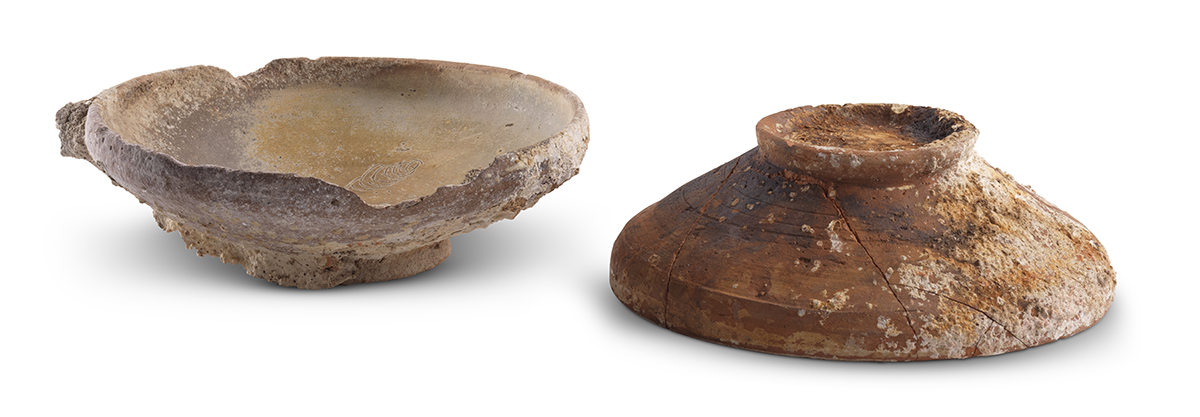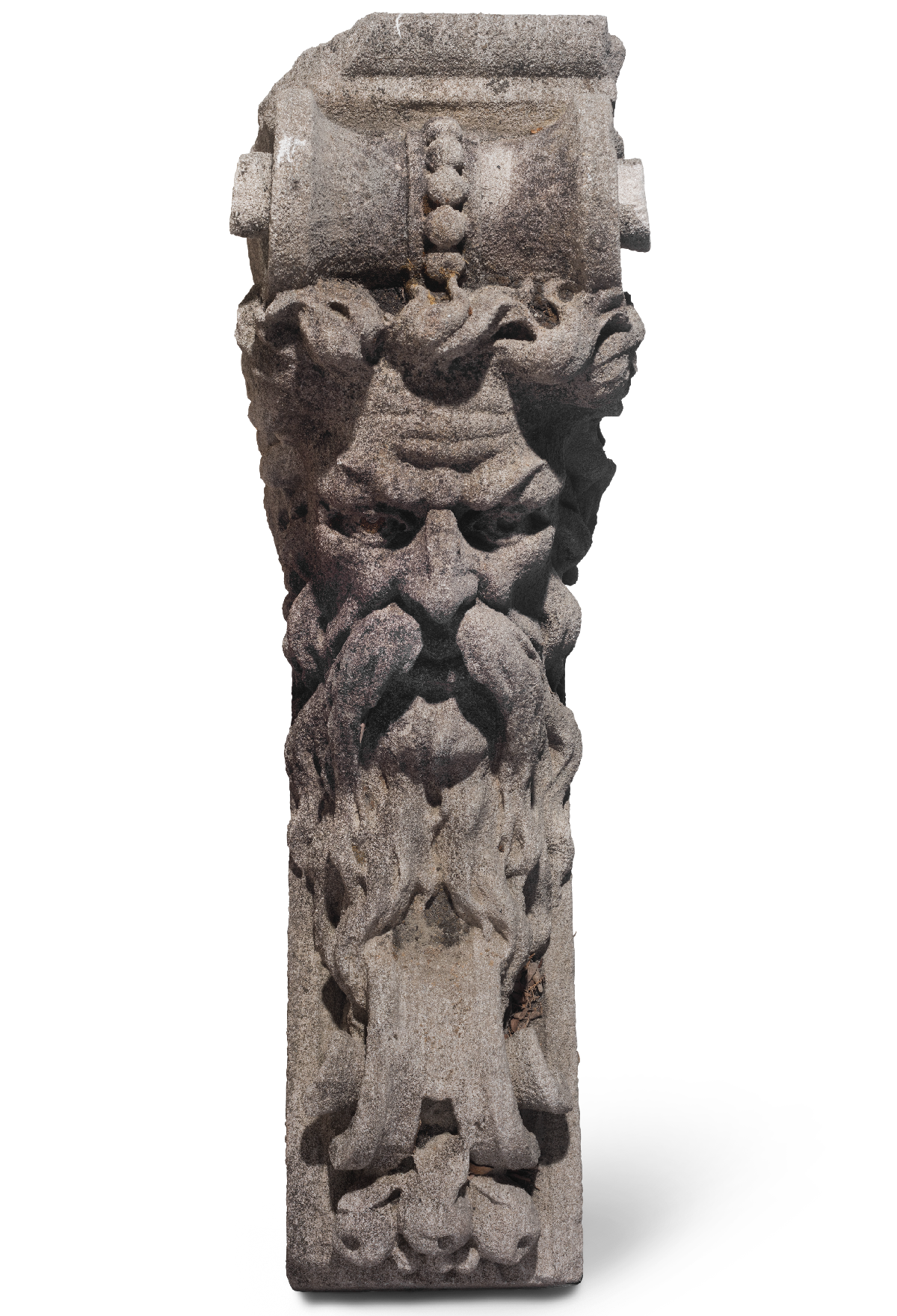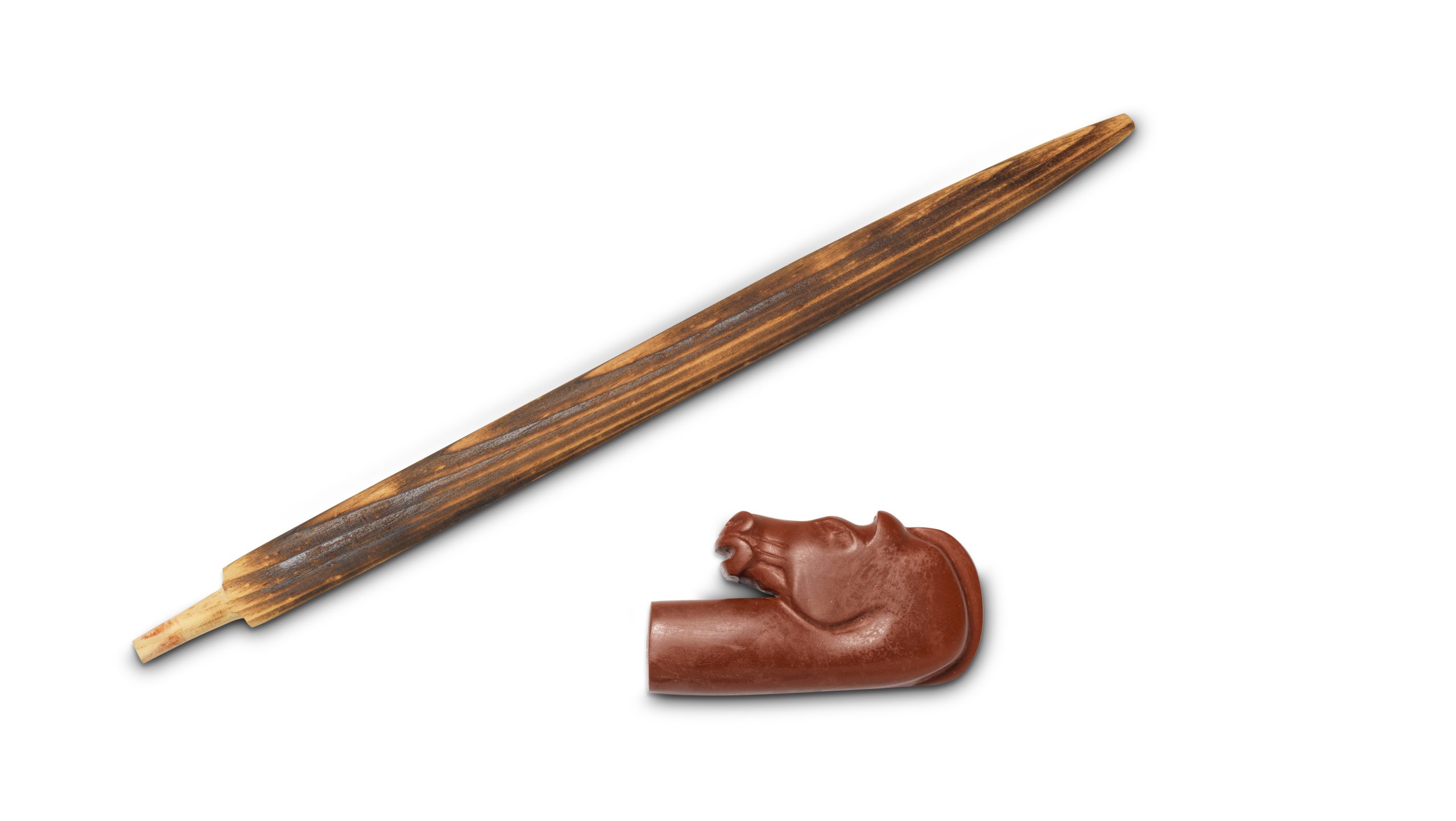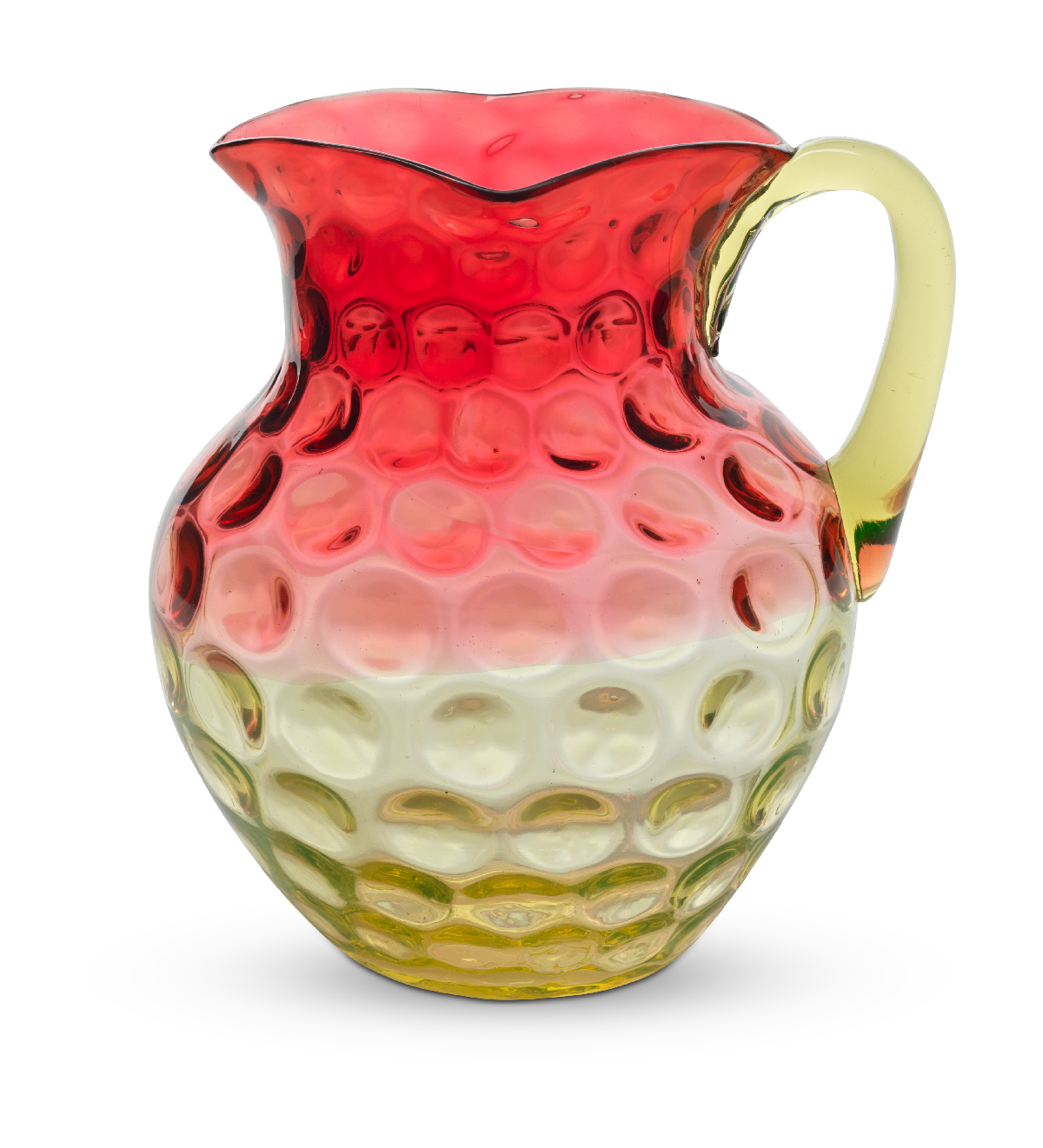Bronzes
Seated Buddha, 15th–16th century
Unknown maker, Thailand
Bronze, 11 1/2 × 7 × 3 in. (29.2 × 17.8 × 7.6 cm)
Brooklyn Museum, New York City, collection of Beatrice Riese, 2015.47
These items display the range of surfaces that form over time when bronze (an alloy of copper and tin) is exposed to and chemically reacts with salts, acids, alkalis, and moisture in its surrounding environment. At times, metalwork has been intentionally patinated to create these corroded surfaces, which are admired for their appearance. The distinction between corrosion and patina is a value judgment: they are materially the same. Metalworking involves the human manipulation of metal ore through a series of chemical and physical processes; corrosion chemically approximates the material’s reversion to ore. Across time and geographies, metalworkers have learned to work with such activity, creating patinas and contrasting precious metal inlays with these effects in mind.

Click thumbnail images to view slideshow
See other items in How is Matter Active?


